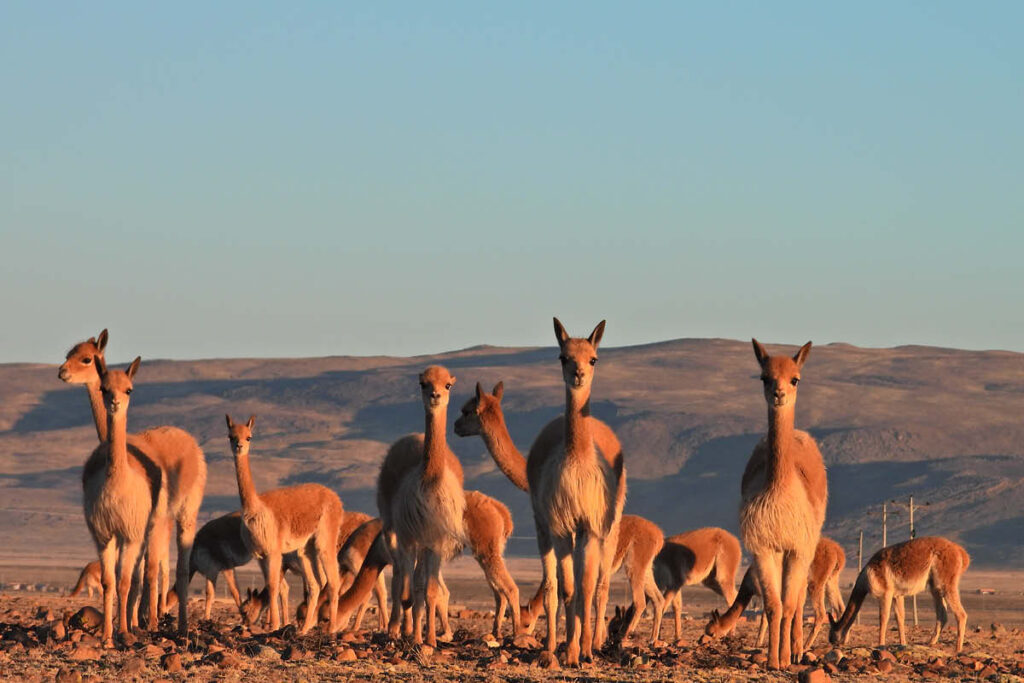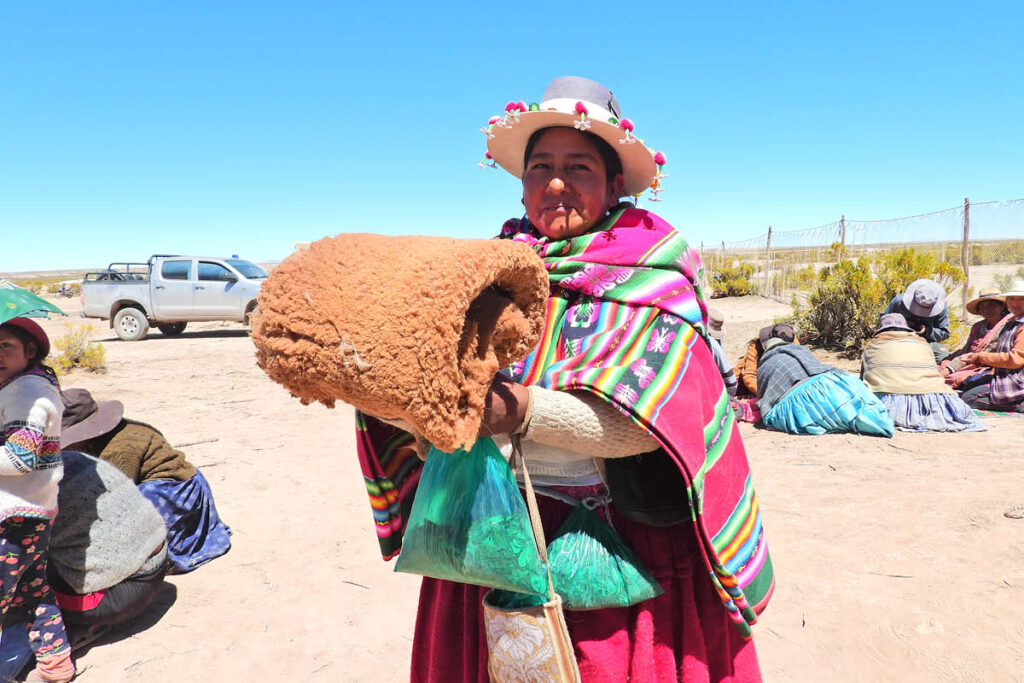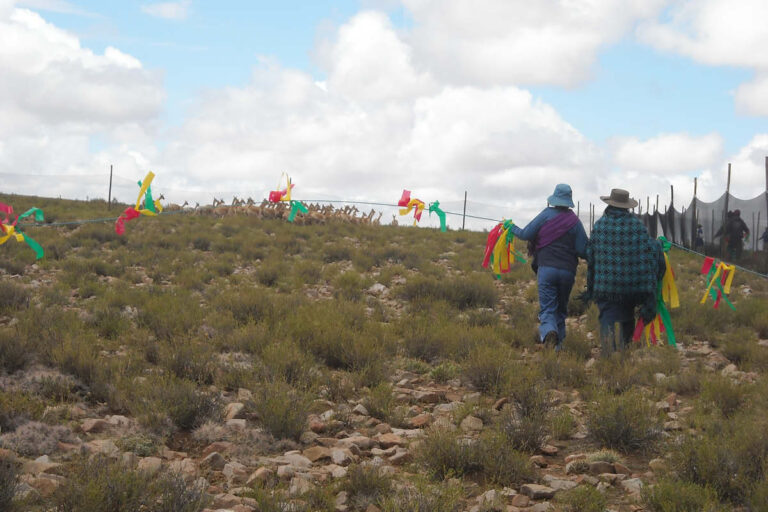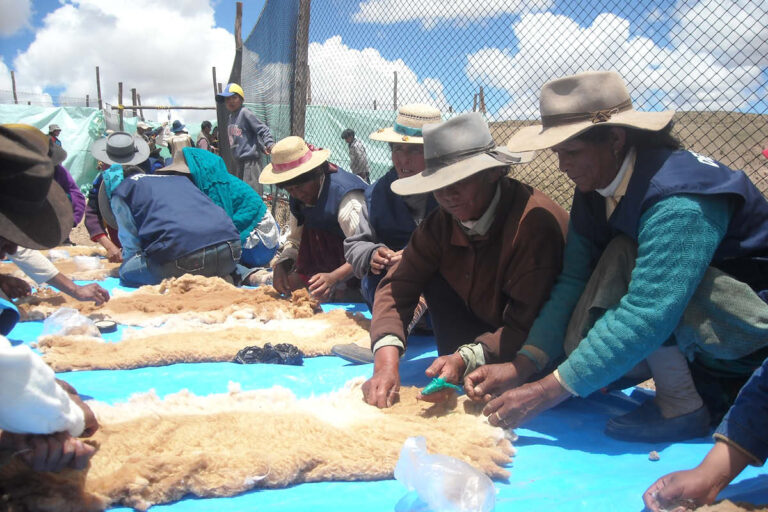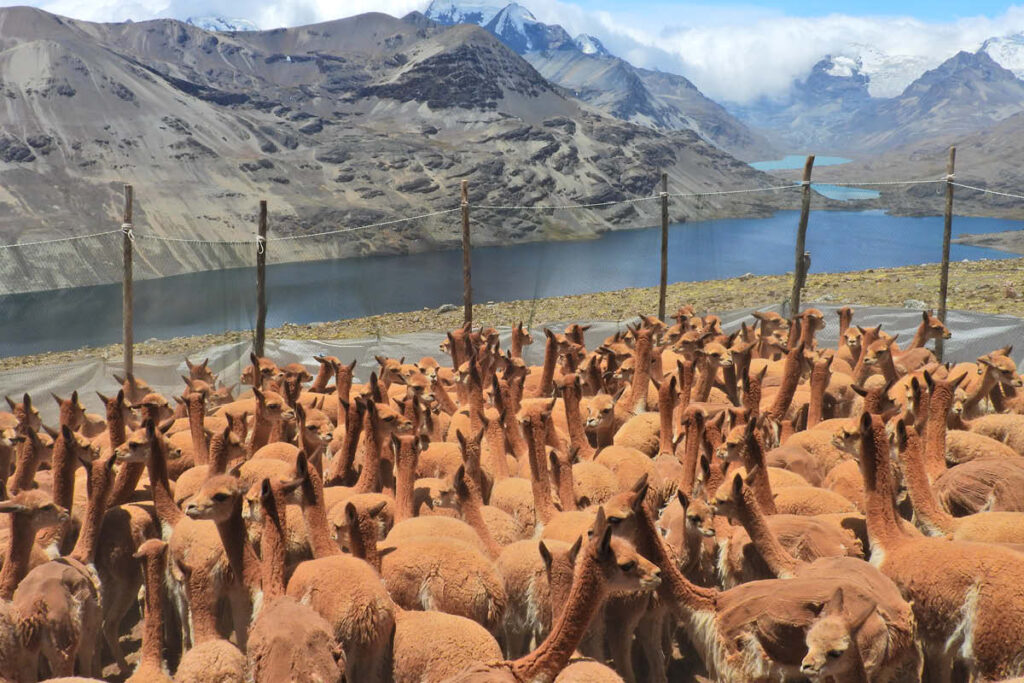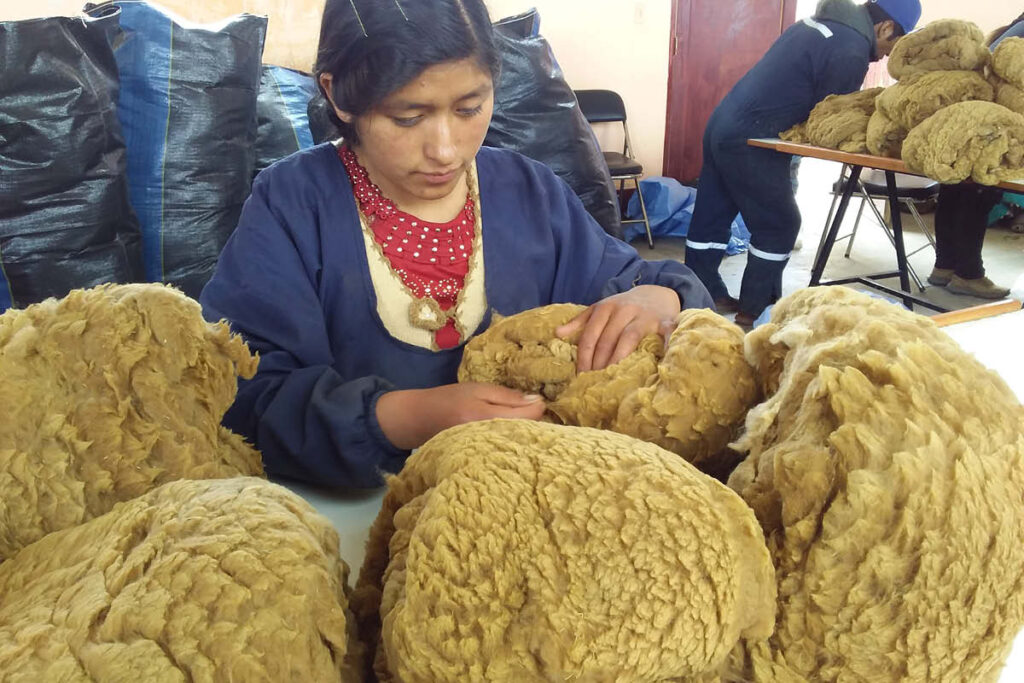Edith Mollo is a project coordinator at Vicuñas Villazón in the Regional Association of Managing Communities of Vicuña Villazón.
Humber Alberto is an expert from Greater Madidi-Tambopata Landscape Conservation Programme, Wildlife Conservation Society Bolivia (WCS-Bolivia), La Paz, Bolivia.
Vicuña is a wild camelid native to the Andes region and the smallest of all. It inhabits the Puna ecoregion, 3200 meters above sea level, characterized by a cold climate and low rainfall. Vicuña feeds on low grasses and needs to consume water daily, thus prefers to be near rivers and high-altitude wetlands. Once listed as an endangered species, efforts for its conservation and sustainable management have increased its numbers significantly.
Edith Mollo and Humber Alberto, experts on vicuñas, share their perspectives on the sustainable management of this wild camelid in Bolivia.
How have vicuñas traditionally played a vital role in Andean communities, and what specific roles do they serve within these societies, especially in regions facing environmental and economic challenges?
Edith: The vicuña has played an important role in Andean communities throughout different times, representing rituality, the link between Mother Earth and people, where both the animal and its fibre fabrics are considered sacred. During the Inca empire, vicuña fibre was used to dress the Inca and the nobility. Its fibre is the finest in the world and has a high market value due to its softness, calorific value and comfort. During the Spanish colony, the trafficking of fiber and leather to the global market endangered the species. Hunting is currently prohibited in Bolivia and vicuña fibre from sustainable management generates additional income for peasant communities. In addition, its soft legs and light weight do not generate negative impacts on soils and highland ecosystems.
